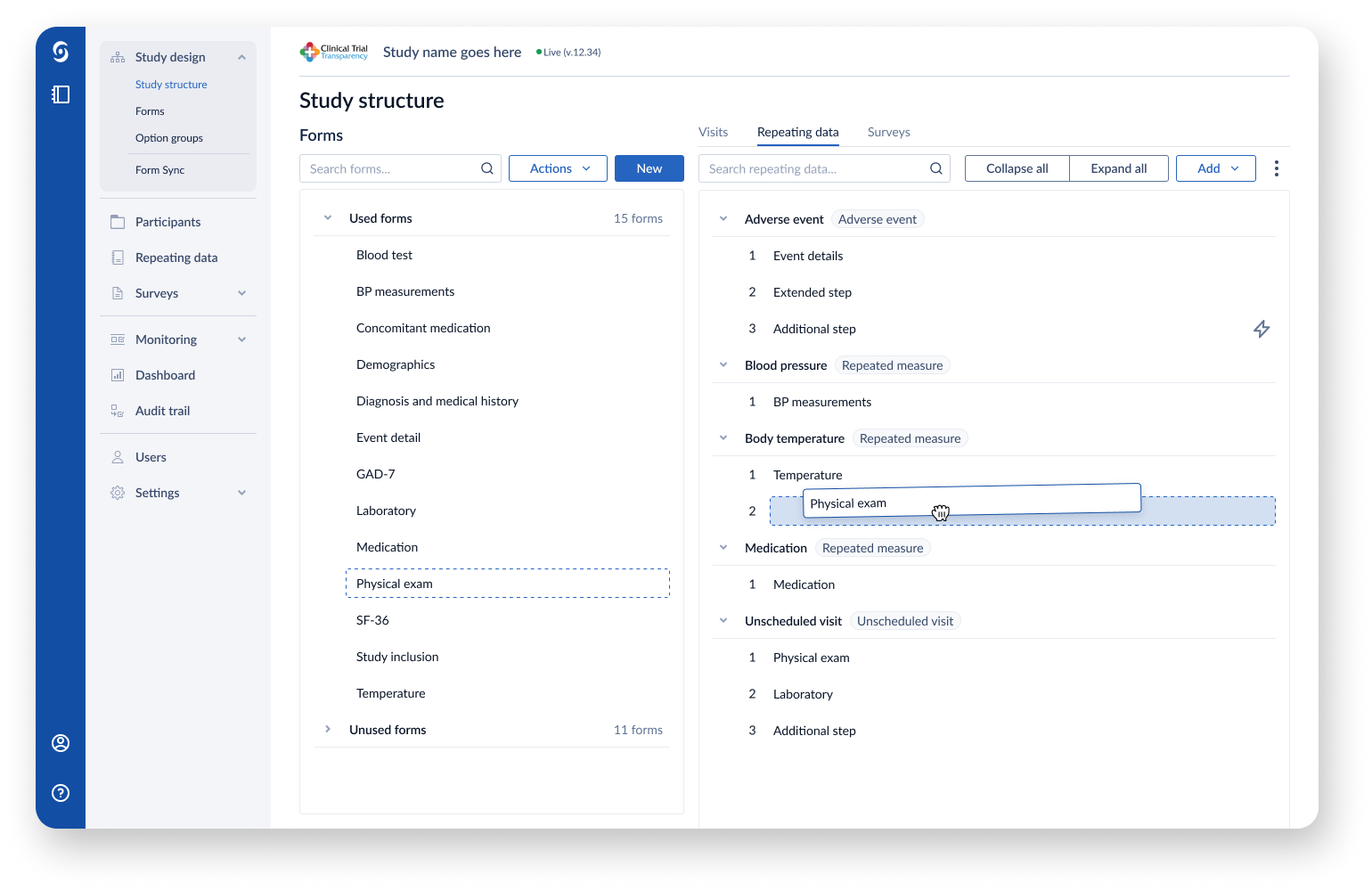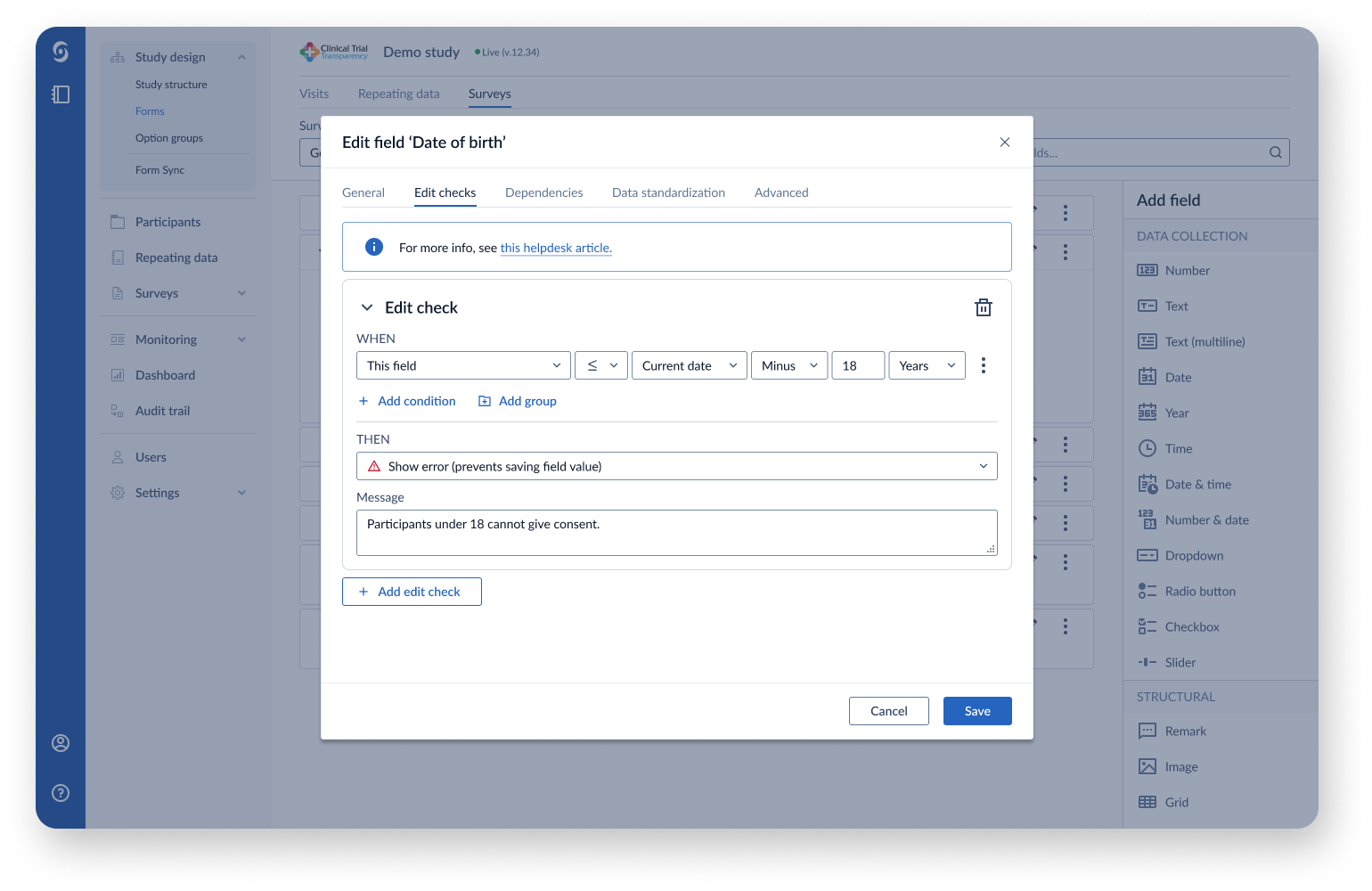Castor
CDMS
For nearly three years, I worked as a senior UX designer on Castor’s Clinical Data Management System (CDMS) used by major players in the clinical trial space. When I joined the company, the product was already undergoing a major migration from ExtJS to React, a transformation that also aimed to significantly improve the user experience. My work spanned both new and existing features, contributing to a more scalable, accessible, and user-friendly product.
My role
As the lead UX designer, I was responsible for the full UX process, ranging from discovery and research to design, prototyping, validation, and implementation. I collaborated closely with product managers, developers, internal subject matter experts, and external customers. I also played a key role in maintaining and shaping the design system, advocating for visual consistency, accessibility, and a modern user experience.
Approach
New features: End-to-end UX process
For entirely new functionality, I worked closely with the Product Owners to kick off each project with discovery research, gathering insights from users and stakeholders to inform our direction. Together we wrote product requirements and then moved through iterative design cycles:
Designing wireframes and interactive prototypes
Validating concepts with internal subject matter experts, stakeholders, and external users
Refining based on usability feedback
This approach ensured alignment with both user needs and business goals before development began.

The study structure is core to the CDMS product, though the legacy feature lacked good UX. Through drag-and-drop interaction and reuse of existing forms, this was greatly improved.

No study without forms. Utilising the same patterns as in the study structure, users can easily build and reorder questions in their forms.
Improving existing features
For improved features, I began with a thorough analysis of the existing experience, using tools like Productboard, NPS data, and direct feedback calls with customers and internal teams. I conducted accessibility reviews in collaboration with an external party to further identify improvement opportunities.
The process involved:
Redesigning flows to reduce complexity and improve usability
Prototyping and testing iteratively
Validating improvements through meetings with stakeholders and users

A proper dashboard to visualise study health is an example of a new feature in CDMS.

Although some condition-based rules already existed in CDMS, a clear interface for them was not yet present.

Scheduling and conducting televisits (a clinical visit through online video calling) was another new feature.
Challenges
Working in a fast-paced, roadmap-driven environment brought several challenges:
Limited engineering capacity sometimes forced us to scale down design scope. I regularly advocated for maintaining UX quality while aligning with technical feasibility and resource constraints.
Design system maintenance became a hurdle after the dedicated engineering team for the system was disbanded. This meant I had to work primarily within existing patterns and components. I adapted by focusing on consistency and creative reuse of available elements to maintain quality and coherence.
Impact
Higher customer satisfaction was reflected in improved NPS scores and positive direct feedback from users and internal stakeholders.
By leveraging and enforcing our design system, we enhanced scalability and accessibility, which directly contributed to reducing user errors during data entry.
My work helped establish a more unified and user friendly interface, improving the overall experience across the platform.
Reflection
These projects taught me to:
Design with system-wide coherence, ensuring patterns were consistently reused throughout the platform.
Adapt my design approach based on feature maturity, handling everything from entirely new features to complex redesigns.
Collaborate effectively with a wide range of stakeholders, including developers, product managers, and external partners.
Take ownership of design system governance, defining and documenting design guidelines and mentoring other designers to maintain consistency and accessibility, especially when working with reduced team capacity.
Let’s connect!
Send me a message or connect on LinkedIn if you want to get in touch.

